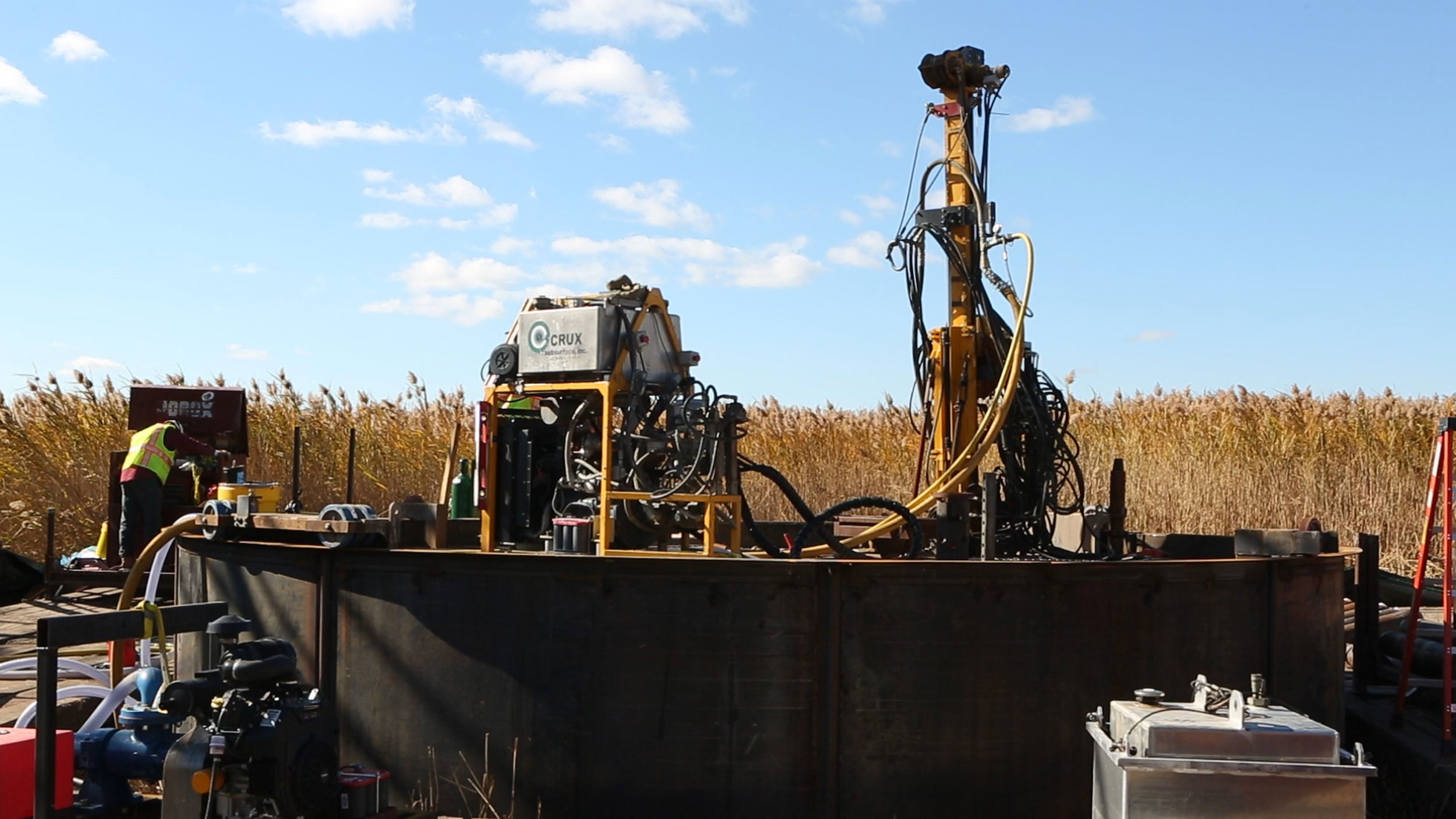
Deep Foundation Design-Build in Protected Wetland
The Susquehanna-Roseland Electric Reliability Project is a 500 kV transmission line from the Berwick, Pennsylvania area to Roseland, New Jersey. Public Service Electric and Gas Company (PSE&G) is responsible for building the New Jersey portion of the alignment, including a 1.5-mile segment traversing Troy Meadows, a Priority Wetland located in Morris County. The structures located in this habitat required specialty construction methods to complete. The expected in-service date for the full line is June 2015.
Team Members
PSE&G
Burns & McDonnell
KH&M (Kiewit – Henkels & McCoy Joint Venture)
Crux Subsurface
Crux’s Role
Crux provided specialty foundation EPC services for the seven structures located within Troy Meadows. Groundwater and access constraints led to the decision to utilize micropile foundations at these locations because of their ability to be installed using lighter weight equipment. The owner was given approval to mat a roadway to one structure site close to existing roadways, but the remaining six structure sites required helicopter support for materials and equipment.
Micropiles were an efficient choice to bridge through weak soils and reach underlying bedrock, which varied in depth between 60 feet and 115 feet below ground level. In order to minimize impacts to the wetland and facilitate construction activities, Crux employed a unique closed cell cofferdam at each structure site. This setup offered a number of benefits to the project, including providing a stable platform for equipment in soft soils and groundwater, containing drill spoils from entering the wetland, and acting as a form for concrete placement. A rotating drill carriage and micropile drill were set on top of the cofferdam to install micropiles in a battered array. Lightweight portable cranes where utilized to assist in material handling at the helicopter accessible sites.
Crux completed two rounds of value engineering prior to foundation construction, resulting in a decreased number of micropiles and smaller area of total disturbance for the concrete caps. Reducing the amount of concrete poured and piles installed resulted in significant benefits to a tight project schedule. The allowed outage for all work to be completed within the wetland area was 90 days, with just 60 days allotted for foundation construction activities. Crux employed six drills simultaneously and deviated from the normal sequence of construction activities to ensure this schedule was met. All foundation work was successfully completed ahead of the scheduled deadline.







